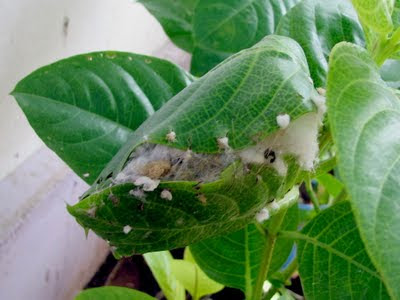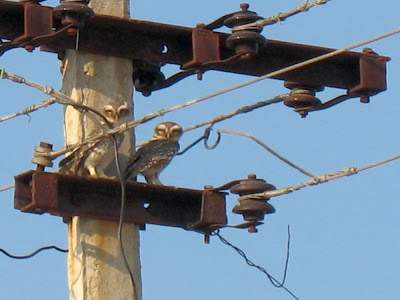The Common Tailorbird is an Asian songbird common throughout Tiruvannamalai District. This passerine bird is typically found in open farmland, scrubs and gardens. Its song is a loud cheerful towit-towit-towit.
It is a small restless bird olive-green in colour with whitish underparts, a rust coloured crown and two elongated pinpointed feathers in the tail. The Common Tailorbird is insectivorous and is particularly attracted to insects and grubs at flowers and also favours flower nectar.
The Tailorbird gets its name from the way its nest is constructed. The passerine bird has a long pointed beak with which it makes tiny holes in leaves. The edges of a large leaf are pierced and sewn together with plant fibre or spider silk to make a cradle in which the actual nest is built.
The nest is a deep, soft cup lined with soft materials and is placed in thick foliage and the leaves used to hold the nest have the upper surfaces outwards so that the nest is difficult to spot. It is said that only the female stitches the leaves of the nest.
This bird’s breeding season is March to December peaking from May to August. The usual clutch is 3-4 eggs reddish or bluish white in colour. The incubation period is about 12–14 days with both male and female feeding the young, and the young birds fledgling in around 14 days. Mortality of eggs and chicks is high due to predators.
The birds roost alone during the non-breeding season but may roost side-by-side during the breeding season.The roost sites chosen are thin twigs on trees with cover above them and close to human habitation and lights.
This bird is fearless and the Tailorbirds currently visiting my verandah move around within feet of myself and my large dogs as they have taken a particular liking to the above plant for their night-time perch.
To view videos, audios and more photos of the Common Tailorbird, go to this link here:
This bird is fearless and the Tailorbirds currently visiting my verandah move around within feet of myself and my large dogs as they have taken a particular liking to the above plant for their night-time perch.
To view videos, audios and more photos of the Common Tailorbird, go to this link here:





















